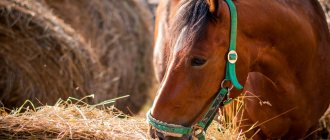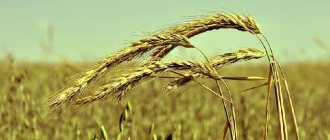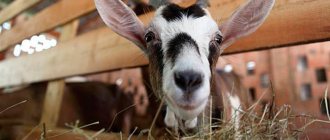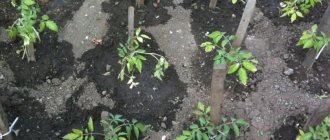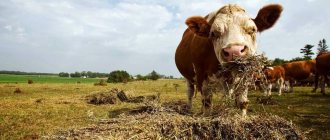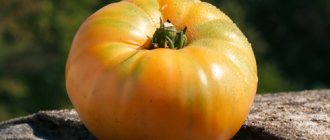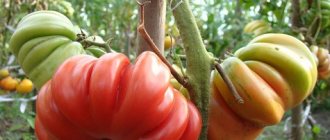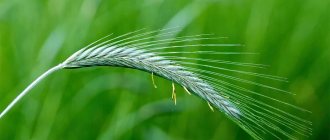Varieties of Sudan grass
The variety is characterized by an accelerated growth rate, high drought resistance, and can withstand frosts down to -2 °C. The variety gives 2-3 full cuttings. The growing season until the seeds ripen is 78-81 days. The inter-mowing period is 30-45 days. The variety practically does not lodge. The average yield of green mass is 393 c/ha, hay – 78 c/ha, seeds – 20 c/ha.
The plant reaches a height of 150 cm, the stem is cylindrical, the plant is of medium bushiness.
Leaves are lanceolate. The panicle is spreading, the spikelets are diamond-shaped. Sudan grass seeds are oval-round, color from light yellow to light brown.
One of the leading annual cereal crops. It is an insurance crop in acutely dry years. The plant is used for green fodder, hay, grazing, haylage. The variety is highly productive: it produces up to 35 t/ha of green mass, 8.5 t/ha of hay and 2.2 t/ha of seeds.
The plant reaches a height of 170 cm. The growing season for seeds is 75-85 days. Weight of 1000 seeds is 13.5-14.5 grams. Feeding qualities: “Kinelskaya 100” contains
9-12% protein. 100 kg of feed contains 14-15 feed units and 1.4-1.6 kg of digestible protein.
Mid-season variety. For 2 mowings, the variety allows you to get 45-50 t/ha of green mass, 9-11 t/ha of hay. Seeds - up to 2 t/ha. The grass is resistant to lodging, the variety is characterized by high regrowth after cutting. The duration of the period from germination to the first cutting is 55-60 days, and from the first to the second - 45-50 days.
The plant reaches a height of 250-280 cm. The stem is cylindrical, the foliage is high. The leaves of "Zemlyachka" are large and drooping. The panicle is erect, lanceolate, up to 35-40 cm long. The glumes are black. Seeds are filmy.
Need Sudan Grass Seeds? Contact Russian Field LLC.
Harvest accounting
When using varieties for haymaking, the yield of perennial grasses is taken into account at the onset of the beginning of flowering phase for legumes and the full heading phase for cereals; for pasture use - upon the onset of pasture ripeness, when the height of the grass reaches 15-20 cm.
To obtain high-protein feeds when used in multiple cuts, legumes are mowed in the budding phase, and cereals - in the inflorescence sweeping phase.
Calendar accounting is not always carried out simultaneously, only when the phase begins by variety.
When testing varieties using animal grazing, each repetition of the experiment across all plots is divided into equal parts according to the number of grazing cycles expected per season, for example, 5. Before grazing livestock on the plot for the first grazing, the supply of green mass is taken into account for 1/5 of each plot in each repetition.
The remaining 4/5 of all plots are grazed without taking into account the harvest.
At the end of the first grazing and removal of livestock from the plot, mowing and plot counting of uneaten residues from the remaining 4/5 of the plots are carried out, also with the taking of a test sheaf.
Based on the difference between the reserves of green mass and the residues during the next grazing (translated per hectare), the yield of the consumed pasture mass and its composition are estimated.
When counting individual plants in selection nurseries with individual placement of plants, all green and dry mass is weighed, the structure of each plant is analyzed and the yield is calculated.
Determination of storage capacity for silage and haylage
The storage capacity for silage and haylage is measured in cubic meters/ha and depends on the degree of withering of the green mass (dry matter content) and on the degree of compaction of the silage. The volume of storage capacity is calculated by dividing the yield indicator in terms of dry matter / ha per kg DM / cubic meter. m. As compaction increases, the volumetric weight increases and thus the storage volume requirement decreases.
Table 3. Yields and storage requirements for grass haylage and corn silage
*with a meadow grass yield between 90 and 120 centners of dry matter/ha, depending on the degree of compaction, the storage volume requirement is 45-55 cubic meters/ha. **for waxy ripeness corn silage of average yield, the storage volume requirement is 70-80 cubic meters/ha.
At what distance should I sow alfalfa?
Alfalfa seeds are sown in rows using seed drills that are attached to tractors. The seeding depth is about 0.6 cm. The distance between rows is usually 20 cm or less.
Interesting materials:
How to write a paragraph on PC? How to write writes or writes? How to write a letter of gratitude to a teacher? How to write a letter to eBay? How to write one and a half million? How to write it correctly remains? How to write the Roman numeral two? How to write in a story on VK? How to cut carrots for noodles? How to set up auto payment in VTB online?
Botanical description
Sudan grass, sorghum sudanese or sudanese ( Sorghumsudanense
) is a valuable annual forage crop of the cereal family (poagrass), a variety of sorghum. Sudan grass has a powerful fibrous root system that penetrates to a depth of 2-2.5 meters. The stem is cylindrical, erect, and can reach a height of 0.5-3 m. Inside the stem is filled with spongy parenchyma. The leaves are large, lanceolate, 4-4.5 cm wide, 45-60 cm long. The leaves of the middle tier are the most developed, which are very valuable in animal nutrition.
The inflorescence is a multi-spiked panicle. Sudan grass seeds are caryopses. The weight of 1000 seeds of Sudanese grass is 10 - 15 g.
This is a heat-loving culture. Sudan grass seeds begin to sprout at a temperature of 8-10°C, but the best germination temperature is 20-30°C. At an average daily temperature of no higher than 13 °C, the plant practically does not grow.
Sudan grass grows slowly during the first weeks after sowing Tillering of the plant begins at the moment of formation of the fifth leaf. In the subsequent period, Sudanese grass sharply increases in growth; daily growth can be 5-10 cm. Stem growth ends by the time of flowering. Flowers open early in the morning. Pollination is anemophilous. The duration of the growing season is 100-120 days.
Sudanese grass can be mowed several times a year, because... After grazing or mowing, the grass grows back well due to shoots. Shoots develop from tillering nodes, from stem nodes that have preserved growth points. Under favorable development conditions, the plant produces 3 cuttings.
Thanks to its powerful, fibrous root system, which goes deep into the ground, Sudan grass is drought-resistant. However, when irrigated, it significantly increases the volume of green mass.
The plant grows on different types of soil; the grass produces the richest harvests on chestnut soils and chernozems.
Sudanese grass cultivation technology
Soil preparation is aimed at accumulating moisture in the ground and destroying weeds. The soil must be leveled before sowing. The sowing rate is 1-1.8 million seeds per 1 hectare in the dry steppe zone, in the forest-steppe zone - 2-2.5 million seeds per 1 hectare.
When growing Sudanese grass for seeds , a wide-row sowing method is used; when growing for animal feed, a continuous sowing method is used. Sowing begins when the ground warms up to 10°C at a depth of 10 cm. Sudanese grass seeds are planted in the ground to a depth of 3-4 cm. At the beginning of the plant's sweeping start harvesting grass for hay. Subsequent mowings can be carried out at intervals of 30 days.
